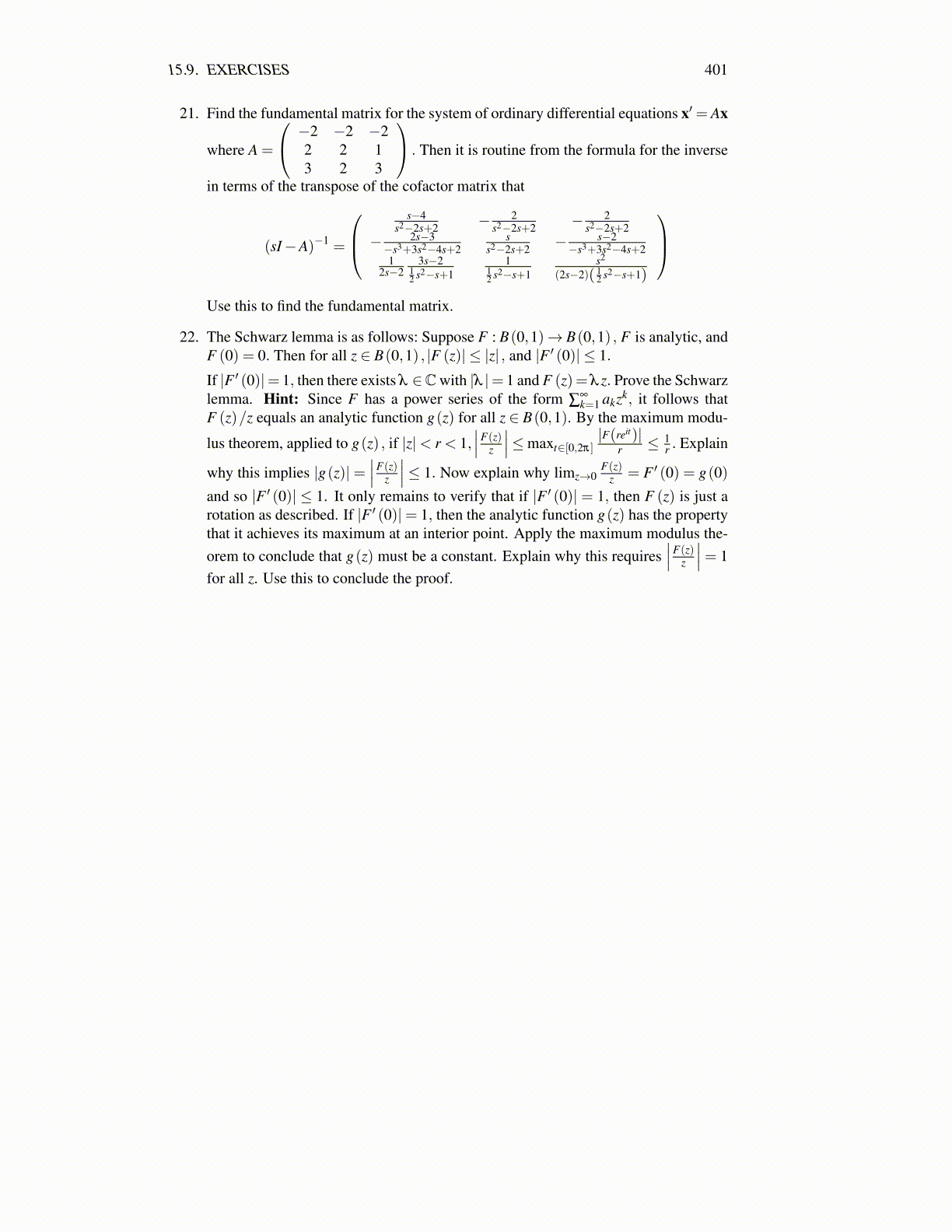
15.9. EXERCISES 401
21. Find the fundamental matrix for the system of ordinary differential equations x′ = Ax
where A =
−2 −2 −22 2 13 2 3
. Then it is routine from the formula for the inverse
in terms of the transpose of the cofactor matrix that
(sI−A)−1 =
s−4
s2−2s+2 − 2s2−2s+2 − 2
s2−2s+2− 2s−3−s3+3s2−4s+2
ss2−2s+2 − s−2
−s3+3s2−4s+21
2s−23s−2
12 s2−s+1
112 s2−s+1
s2
(2s−2)( 12 s2−s+1)
Use this to find the fundamental matrix.
22. The Schwarz lemma is as follows: Suppose F : B(0,1)→ B(0,1) , F is analytic, andF (0) = 0. Then for all z ∈ B(0,1) , |F (z)| ≤ |z| , and |F ′ (0)| ≤ 1.
If |F ′ (0)|= 1, then there exists λ ∈Cwith |λ |= 1 and F (z)= λ z. Prove the Schwarzlemma. Hint: Since F has a power series of the form ∑
∞k=1 akzk, it follows that
F (z)/z equals an analytic function g(z) for all z ∈ B(0,1). By the maximum modu-
lus theorem, applied to g(z) , if |z|< r < 1,∣∣∣F(z)
z
∣∣∣≤maxt∈[0,2π]|F(reit)|
r ≤ 1r . Explain
why this implies |g(z)|=∣∣∣F(z)
z
∣∣∣≤ 1. Now explain why limz→0F(z)
z = F ′ (0) = g(0)
and so |F ′ (0)| ≤ 1. It only remains to verify that if |F ′ (0)| = 1, then F (z) is just arotation as described. If |F ′ (0)|= 1, then the analytic function g(z) has the propertythat it achieves its maximum at an interior point. Apply the maximum modulus the-orem to conclude that g(z) must be a constant. Explain why this requires
∣∣∣F(z)z
∣∣∣= 1for all z. Use this to conclude the proof.